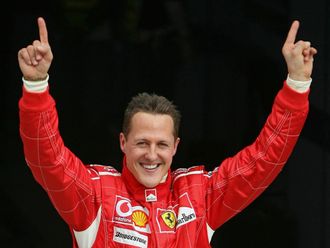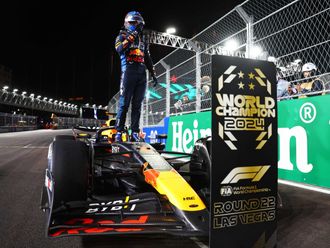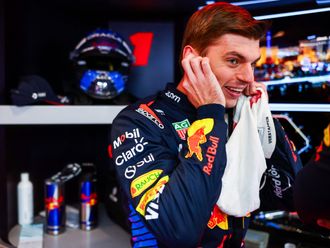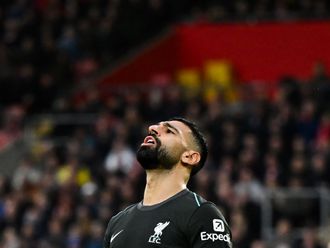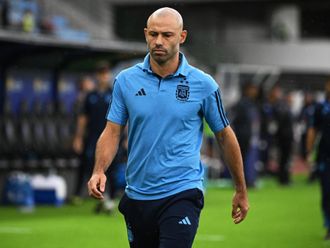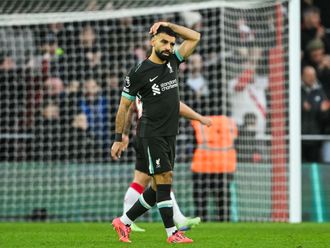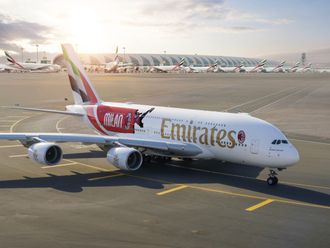Hollywood megastar Sylvester Stallone, nicely relaxed and looking superbly fit, gazed in awe across the luxury yacht-strewn harbour of Monaco’s millionaires’ playground.
“Wow, there’s nowhere like this on the planet,” beamed the movie action man. “Nothing can match it. I’ll never forget it. And the guys, the drivers, who put on the show staring death or injury in the face are just unbelievably brave. Or crazy!
“If I could ever have a claim of which I would be eternally proud, it would be that I had raced Monaco in a grand prix car.”
We were sharing a table for lunch at Bernie Ecclestone’s invitation in the Formula One kingpin’s waterside hospitality unit at the Monaco Grand Prix, with a view of one of Chelsea Football Club-owning Russian oligarch Roman Abramovich’s vast ocean-going motor yachts and its helicopter traffic.
Sly — as he insisted I should call him — betrayed no attitude of superstardom as he enthused about a motor racing movie he was planning. “If I can get anywhere near capturing the drama, the action and the sheer ballsy-ness of an F1 driver, I’ll be one happy guy,” he said.
He was only too anxious to divert the attention from himself to hail the drivers as his heroes and wonder at their courage, driving wheel-to-wheel at 200-plus mph around circuits as treacherous as the Monte Carlo street challenge, with its borders of unforgiving steel barriers.
“I have never known anything like this sport as the greatest example of man’s willingness and ability to spend his working life right on the edge of survival,” said Stallone. “It, and they, are phenomenal. This is all a real spectacle. A thriller in real life that you couldn’t better in fiction.”
That, I have to confess, is my own overall feeling about Formula One, my scene with international travel as a UK national newspaper sports writer for 40 years. Drama, excitement, heartbreak, hope and sheer bliss are emotions that run rampant through a sport unparalleled for its entertainment value on a worldwide scale. The drivers have a thirst for thrills that continues to need quenching even after they retire — as shown by sevent-time champion Michael Schumacher’s brush with death on a ski slope in France late last month.
Mercifully — with strict safety rules in place and factors built into 220mph F1 cars that cradle and protect drivers from injury or worse in crashes that 25 years ago would have resulted in certain death — tragedy nowadays is a rare occurrence at this, the highest level of motorsport.
I saw Brazilian champion and legend Ayrton Senna killed in a fateful crash at Imola, Italy, in the San Marino Grand Prix in 1994, his helmet freakishly pierced by a spike of metal. But thankfully, despite some truly scary, car-wrecking smash-ups with somersaulting results, the casualty rate has fallen away into a series of miraculous escapes from hurt except to the ego.
The daredevil risk-factor to the committed drivers who make up a grand prix grid is magic to those of us who cannot imagine what it must be like to be in close combat in a melee of equally determined men who refuse to surrender a metre of track under the direst, sometimes the most foul of challenges.
And this brings me to another name-dropping account, when former gutsy world champion Nigel Mansell, a long-time friend, and I took a trip to Arizona after he abandoned Formula One to take up IndyCar racing in America.
He called me in my hotel room with an invitation to go to dinner, to be taken at his usual time of 6.30pm, but didn’t tell me there would be another guest.
That was Paul Newman. The movie legend who wanted to be a race driver more than an actor and who clinched a second place in the gruelling Le Mans 24 Hour event and, whenever he had time, much to the fright of the film makers who employed him, raced flat-out at tracks across the USA.
He was a delight over dinner, a humble man, a totally hooked and unashamed Mansell admirer whom, he told me, he had signed for his own top-flight IndyCar team after bumping into the famed Englishman at Chicago airport.
“If I could claim I had won one, just one, of the grands prix that Nigel has won I would die a happy man,” he confided. And, no kidding, I would give up all of whatever awards I have ever been given for my movies over the years to be able to look at a Formula One trophy and say that it was mine by dint of my driving skill.”
Mansell, dubbed “Il Leone” (The Lion) by fanatical Ferrari fans in recognition of his fearless combativeness, clinched the world title in 1992, was second in the championship three times, a winner 31 times and placed another 28 times — but suffered 32 crashes.
He said: “I appreciate Paul’s remarks, but I wouldn’t give a single one of my wins or places for any one of his awards. To be a winner in motor racing is the absolute ultimate sensation. The rewards financially and fame-wise are amazing, but there is nothing to match the satisfaction of being the best in the company of great drivers and champions like Ayrton Senna, a real genius, and Alain Prost. And I would have raced for nothing.
“It is impossible to describe the feeling when you climb into a race car, look around the grid at all those equally determined drivers, some in better, faster cars than yours and then go out there and beat them. You never think or worry you are going to crash. That is a risk you have to live with, but put it to the back of your mind. If you didn’t you’d scare youself witless.”
The following day, Newman, who had flown by private jet from a film location in Miami to be with Mansell for his first IndyCar event, introduced me to another motor racing fan and part-time team owner — Gene Hackman. And, once again, I was in the company of a movie idol of touching modesty and diffidence around his own heroes, the drivers.
Hackman said: “These guys are unique. How they manage to stay so cool and calculating when the action is so frantic and downright dangerous I will never know. But I will never stop admiring them.”
The appeal of Formula One and its spectacle of showmanship and skill never fails to attract, with some 350 million people watching worldwide on TV and the teams’ hospitality units bursting with entranced celebrities.
In one weekend at the Monaco GP, I was in the yacht-bound company of film star Hugh Grant, Manchester United’s Ryan Giggs, pop singer and writer Chris de Burgh, cricketer Ian Botham, jockey Frankie Dettori and supermodels Elle McPherson and Heidi Klum. And that happens at just about every grand prix.
“It says a heck of a lot for our show, doesn’t it?” smiled ringmaster Ecclestone. “And year after year the drivers never fail to impress. They are all magnificent men in their flying machines.”
— The writer is a motorsport expert based in the UK


